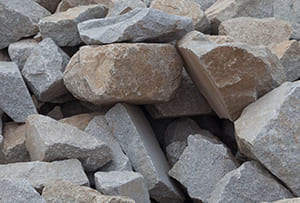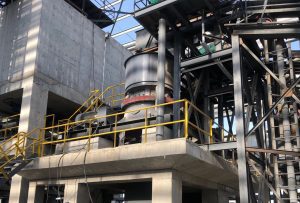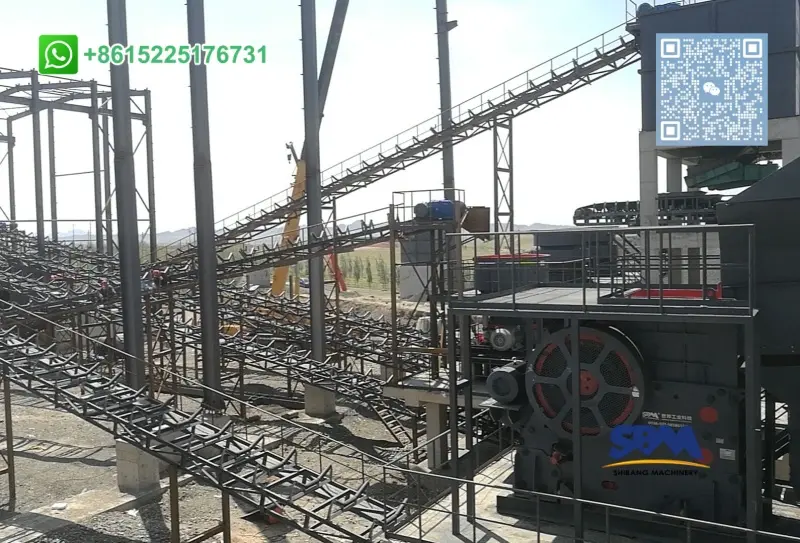Электронная почта: [email protected]
Гранит
Основное содержание
What is Granite?

Гранит, a light-colored igneous rock, develops deep beneath mountains or volcanoes as molten rock slowly cools and crystallizes into solid material. The ore stone contains mostly quartz and feldspar, with smaller amounts of mica, hornblende, and other minerals. It eventually reaches the surface through the erosive action of wind, ice, и вода, which wears away the overlying landforms. The durability of granite makes it a valuable building material.
What is granite stone used for?
Granite is an incredibly versatile and durable natural stone prized for its beauty and strength. Accordingly, its key properties –extreme hardness, resistance to scratching, heat tolerance, долговечность, and unique aesthetic appeal – make it suitable for a wide range of applications:
1. Building & Строительство
- Structural Elements: Used as dimension stone for walls, foundations, columns, and load-bearing structures (especially historically and in monumental buildings).
- Cladding/Facades: Granite panels are a popular choice for exterior cladding on skyscrapers, commercial buildings, and homes due to weather resistance and longevity.
- Bridges & Инфраструктура: Used in bridge piers, abutments, and heavy-duty paving.
- Curbs & Cobblestones: Durable granite curbs appear along streets, while granite cobblestones are suitable for historic or high-end paving.
2. Interior Surfaces (Polished)
- Kitchen Countertops: Themost famous modern use. Resists scratches from knives, heat from pots/pans, and staining (when properly sealed). Offers timeless beauty and value.
- Bathroom Vanities & Countertops: Creates luxurious, долговечный, and water-resistant surfaces.
- Flooring & Wall Tiles: Highly durable and elegant, especially in high-traffic areas. Available in polished, honed, or flamed finishes.
- Stair Treads: Extremely wear-resistant for heavily used stairs.
- Backsplashes: Complements countertops and protects walls.
3. Monuments & Memorials
- Headstones & Mausoleums: Его долговечность, ability to hold fine detail when carved, and resistance to weathering make it the premier choice for cemeteries.
- Public Monuments & Statues: Used for war memorials, historical markers, and sculptures due to its permanence and dignity.
4. Ландшафтный дизайн & Outdoor Application
- Paving Stones & Patios: Unpolished (flamed, bush-hammered, or split-faced) granite provides excellent traction and weather resistance for walkways, патио, and pool decks.
- Steps & Поддерживающие стены: Durable and aesthetically pleasing for garden terraces and walls.
- Boulders & Rock Gardens: Natural granite boulders are suitable for landscaping decoration.
- Outdoor Kitchens & Countertops: Withstands the elements beautifully.
5. Decorative & Specialty Items
- Sculptures & Искусство: Carved by artists for indoor and outdoor art.
- Benchtops (Workshops/Labs): Provides a hard, durable surface resistant to chemicals and impact.
- Chopping Boards: Very hard and sanitary, though can dull knives faster than wood.
- Coasters & Trivets: Protects surfaces from heat and moisture.
6. Промышленное применение (Измельченный гранитный камень)
- Construction Aggregate: Crushed granite is a major component in concrete and asphalt.
- Railroad Ballast: Crushed granite provides a stable foundation for railroad tracks.
- Filter Beds: Used in water treatment facilities.
- Riprap: Large chunks used for erosion control on shorelines and embankments.
What is the hardness rating of granite?
Гранит is a hard rock, rated between 6 и 7 в масштабе MOHS, primarily due to its dominant quartz and feldspar minerals.
- Mineral Composition Matters:
- Кварц: A major component (20-60%), с твердостью по шкале Мооса7.
- Полевой шпат: The most abundant mineral (alkali feldspar and plagioclase), с твердостью по шкале Мооса6.
- Mica: (Biotite or muscovite), much softer with a Mohs hardness of2.5-3.
- Overall Hardness is a Composite: Since granite is a mixture, егоэффективная hardness depends on the relative proportions of these minerals and which mineral a scratch test actually contacts.
- If you scratch a quartz crystal, it will resist up to hardness 7.
- If you scratch a feldspar crystal, it will scratch at hardness 6.
- Mica is easily scratched.
- Typical Range: Поэтому, granite generally falls in the6 к 7 range on the Mohs scale. We generally think of it as harder than steel (about 4-4.5 в масштабе MOHS) and common glass (about 5.5 в масштабе MOHS), but softer than topaz, corundum (sapphire/ruby), or diamond.
Practical Implications:
- Долговечность: This hardness makes granite highly resistant to scratching from everyday items like knives (steel blades are typically Mohs 5.5 or less), coins, or utensils.
- Workability: Although it is hard, we can still cut and polish it with diamond tools (diamond has a hardness of 10 в масштабе MOHS).
- Variation: Some granites with very high quartz content might be closer to 7, while those richer in feldspar might be closer to 6.
How did granite come into our lives?
Granite’s journey from mountain bedrock to everyday items involves several precise stages.
1. карьер (Добыча)
- Расположение & Exploration: Geologists identify viable granite deposits using core drilling and geological surveys.
- Extraction: Massive diamond-wire saws or drills cut 20–60-ton blocks from bedrock. Explosives are minimized to avoid cracking.
- Транспорт: We transport the stones via heavy machinery to processing facilities, often around the world (например. Бразилия, Индия, Italy, Китай).
2. Обработка (Slab Production)
- Cutting: We use giant gang saws (multi-blade) or wire saws to cut the rough material into 2-3 cm thick boards.
- Resin Treatment: We epoxy coat the boards to fill natural cracks and enhance durability/color.
- Polishing: Automated polishing lines use diamond abrasives to achieve a glossy finish (50+ grit steps).
- Контроль качества: We need to inspect the boards for defects and then sort them based on color/grain pattern.
3. Fabrication (Customization)
- Cutting to Size: Based on digital templates, we cut the sheets into countertops, tiles or monuments by CNC.
- Edge Profiling: Edges are shaped (например, beveled, bullnose) using routers.
- Finishing: Honing for matte surfaces, flaming for textured paving stones, or bush-hammering for anti-slip use.
4. Distribution & Монтаж
- Shipping: The company crates and ships finished products globally using container ships or trucks.
- Монтаж: Professionals install countertops (with structural supports), tile flooring, or monuments using adhesives/anchors.
5. Измельченный гранитный камень
Crushed granite (usually refers to particles with a size less than 50mm) is a by-product of granite mining and processing. It has a wide range of uses and is of great economic value.
- Строительство & Civil Engineering
- Municipal & Landscape Projects: Крупный гравий, colored chips, Производимый песок, and fine powder.
- Industrial Processing
- Eco-Friendly & Agricultural Innovations: Water treatment, soil improvement, and ecological restoration.
- High-Value Applications: Radiation shielding, floor heating backfill, and engineered quartz stone.
How is granite ore mined?
We usually refer to the process of granite extraction as quarrying (particularly dimension stone quarrying) rather than traditional underground “ore mining”. Since the value of granite lies in large intact blocks used in buildings and monuments, the process focuses on extracting huge pieces with minimal damage.
1. Exploration & Site Selection
- Geologists identify deposits with desirable color, pattern, grain size, structural integrity, and minimal fractures/faults.
- Core drilling and geological mapping assess the deposit’s quality, объем, и доступность.
- Factors like proximity to transportation, environmental impact, and community considerations are evaluated.
2. Clearing & Overburden Removal
- Vegetation, soil, and loose rock (“overburden”) covering the valuable granite bedrock are removed using bulldozers, excavators, and dump trucks.
- This exposes a clean, workable rock surface.
3. Бурение
- Primary Drilling (for Blasting): Developers use large crawler drills to drill deep, closely spaced holes vertically (and sometimes horizontally) along the planned cut line. These holes define the perimeter of the block section to be removed.
- Secondary Drilling (for Wedging/Splitting): Smaller holes or “stitch” holes are drilled precisely along the intended separation lines for individual blocks.
4. Cutting & Разделение
- Controlled Blasting: Miners place low-impact explosives (such as non-explosive expanding mortar or carefully metered dynamite) into the main borehole. Затем, this creates a fracture plane separating a large section of rock (а “bench” или “lift”) from the main mass.The goal is to crack, not shatter.
- Channeling/Diamond Wire Saws: Increasingly common methods replacing blasting for primary cuts.
- Channeling Machines: Use large cutting wheels with tungsten carbide teeth to create deep, parallel grooves defining the sides and back of a block section.
- Diamond Wire Saws: The operator feeds a wire loop embedded with an industrial diamond bit through a guide hole, driven by a large motor. Then it cuts through the rock like a giant bandsaw, creating precise vertical and horizontal cuts to isolate large blocks. This is the dominant method for high-quality granite extraction due to its precision and minimal waste.
- Wedging & Feathering: For separating individual blocks from the large section after primary cutting. Miners insert steel wedges (“feathering wedges”) or hydraulic splitters into the secondary borehole. Pressure is applied to split the rock cleanly along natural grain planes or the drilled line. Hydraulic expanding bags (“dyna bags”) are also used.
5. Block Lifting & Removal
- Once isolated, quarry workers carefully lift extremely large and heavy blocks (often weighing 20-50 tons or more) using heavy-duty excavators with special grapples or large cranes with slings.
- Workers then load the blocks onto sturdy trucks or trailers for transport to the processing plant.
6. Обработка
- Trucks transport blocks to a nearby sawing facility (“shed”).
- They are cut into slabs using giant gang saws (multiple parallel blades) or large-diameter circular saws, all using diamond-tipped cutting segments.
- Slabs are then polished to a high gloss using progressively finer abrasives.
- Slabs or cut-to-size pieces are shipped to fabricators who make countertops, плитка, monuments, и т. д..
7. Waste Management & Reclamation
- Quarries generate large amounts of waste rock (“grout”, small pieces of crushed stone, опилки). As a matter of fact, this waste rock becomes construction aggregate (гравий, road base) after it has been crushed on site.
- Filtration systems recycle water used in sawing and polishing.
- Dust control measures (Водяные брызги, enclosures) are implemented.
- Quarry operators conduct progressive reclamation: they stabilize slopes, replace topsoil, and replant vegetation as sections of the quarry become exhausted.
What is the granite processing process?
Granite processing transforms quarried stone into finished products such as countertops, tiles or monuments.
1. Primary Cutting (Block Dressing & Slabbing)
- Block Inspection & Trimming: Technicians inspect blocks for flaws. Например, they may trim irregular edges using large diamond saws.
- Slab Production: Workers cut the primary block into slabs (typically 2cm, 3см, or thicker) using:
- Gang Saws: Multiple parallel blades cut several slabs simultaneously (slower, less common now).
- Frame Saw (Block Cutter): A single large-diameter diamond blade moves vertically through the block (faster, more precise, most common).
- Wire Saws: Used for very large or irregular blocks.
2. Factory Processing (Slab Finishing)
- Slab Handling & Инспекция: Workers unload, clean, and inspect slabs for quality, cracks, and color consistency.
- Resining (Epoxy Treatment – Optional but Common):
- Applied to fill natural pits, micro-fissures, and enhance color.
- Slabs pass under a curtain of liquid epoxy resin.
- Cured using UV light or heat lamps to harden.
- Improves appearance, stain resistance, и структурная целостность.
- Шлифование & Polishing:
- Slabs pass through apolishing line (automatic polishing machine) with a series of rotating heads.
- The abrasive (diamond grit) used will get progressively finer, from coarse (плоский) to very fine (mirror-like shine).
- Typical sequence: Шлифование (грубый) > Honing (semi-smooth) > Polishing (high gloss). Using specific abrasives can achieve different surface effects (например, polished, flamed, brushed).
3. Fabrication (For Specific Products like Countertops)
- Templating: Create precise templates on-site (using lasers, digital tools or cardboard) for complex shapes such as countertops with cutouts for sinks, stoves, и т. д..
- CNC Machining:
- Digital templates guide CNC machines.
- Cut sink/cooktop openings, faucet holes, and complex edge profiles with high precision.
- Cut miters for seamless joints.
- Final Edge Finishing: Cut edges receive their final polish/profile matching the top surface.
- Final Inspection & Очистка: Thorough check and cleaning before packaging.
FAQs
Кварц дешевле гранита?
In the finished product market (such as countertops/slabs): Quartz countertops typically cost more than granite countertops. This is primarily driven by the raw material cost (high-purity quartz sand) and the complex manufacturing process.
In the raw material market (aggregate/sand powder): Aggregate obtained from crushed granite is extremely cheap, while the high-purity quartz sand/sand powder used to make quartz slabs is very expensive. The raw material costs of the two are completely different. The high cost of quartz slabs stems primarily from the high price of its core raw material: high-purity quartz sand.



